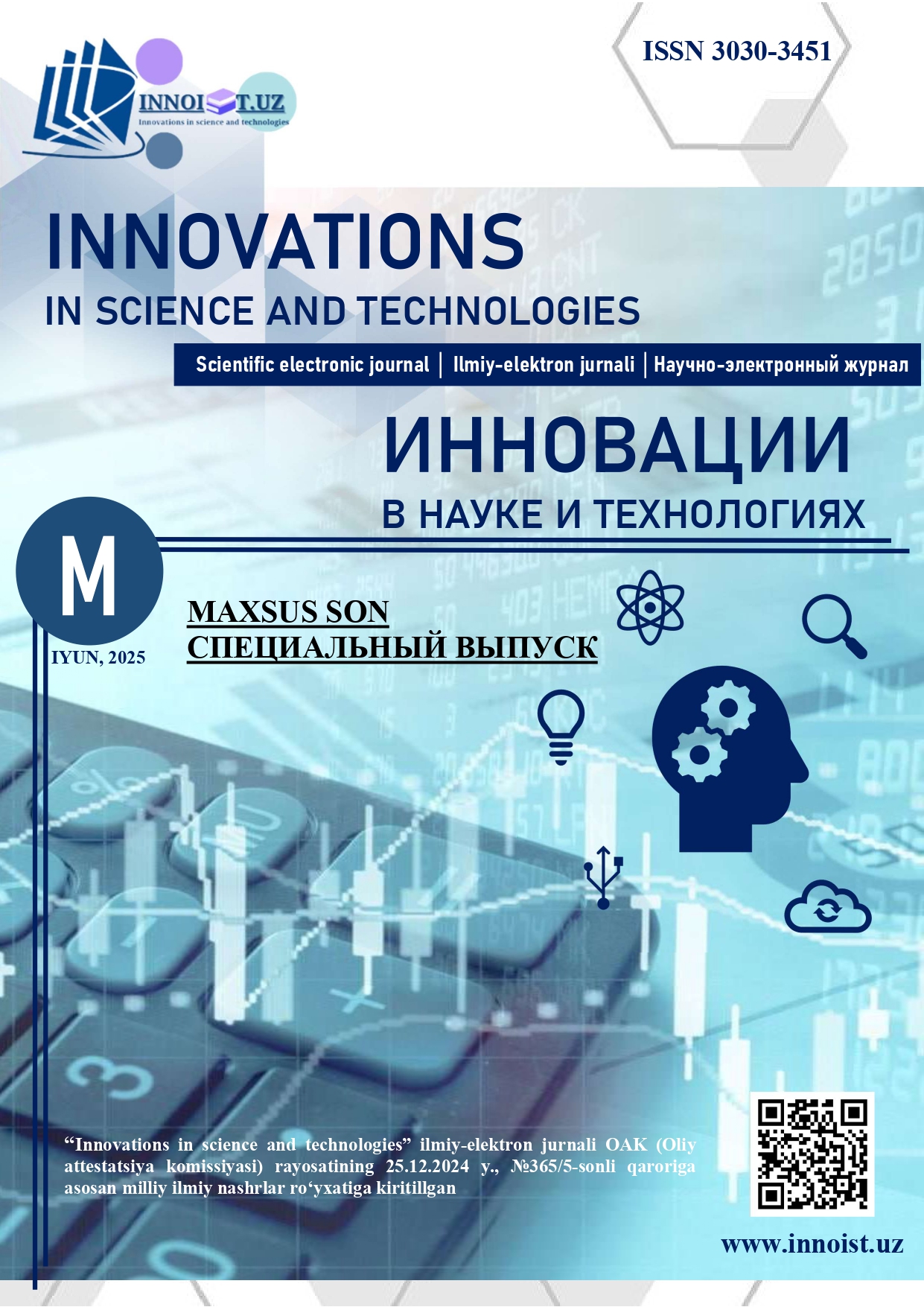CROSS-LINGUISTIC FEATURES OF ENGLISH AND UZBEK MEDIA DISCOURSE
Keywords:
cross-linguistic media analysis, bilingual discourse modeling, comparative linguistic frameworks, semantic clustering techniques, interpretive accuracy, cultural adaptability, regression-based discourse analysisAbstract
The influence of media discourse has been and is currently still affecting communication patterns of all sizes and in many cultural contexts, and cross-linguistic research still lacks profound insights into the comparative implications of this phenomenon. The purpose of this article is to use statistical analysis related technology to analyze the characteristics of English and Uzbek data for the different types of linguistic data and different levels of interpretive needs of participants in the entire media analysis process. This study addresses this gap by drawing on a rich body of empirical data collected from media texts and audience responses in a comparative case study of English and Uzbek media discourse. Linguistic features of all utterances in the datasets get aggregated in a number of ways into a single analytical framework for researchers whose accuracy is critical for valid interpretations. The study designs the data correlation relationship of the regression model elements, define the relationship between the discourse types, and implement the regression-based method. At the same time, according to the classification of cross-linguistic features, mapping of semantic relationships, filtering redundant information, and graphical visualization are conducted. By providing a comprehensive understanding of how media discourse affects cross-cultural communication, the insights from our analysis contribute to linguistic scholarship, media studies, and applied communication research alike. The paper concludes by identifying several promising areas for future cross-linguistic investigation.
Downloads
References
1. Baydjanova I. Decoding the giggles: Exploring humor across Uzbek, English and Russian languages // UzMU Xabarlari. – 2024.
2. Bolibekova M. M., Elmuratova N. Kh. The structural and functional features of polysemy in the process of translation in the Uzbek and English languages // Journal of Contemporary Issues in Business and Government. – 2021. – Vol. 27, № 1.
3. Fayzieva N. N. K. Usage of euphemism in English and Uzbek political discourse // Asian Journal of Research in Social Sciences and Humanities. – 2022.
4. Komilova N. A. Comparative and linguocultural analysis of the concept gender in Uzbek and English languages // The American Journal of Social Science and Education Innovations. – 2021.
5. KHUSENALIYEVNA K. D., ZULFIYA A., CHORIYEVNA K. D. O. Lexico-semantic features of technical teams of English and Uzbek languages // Journal of Contemporary Issues in Business and Government. – 2021. – Vol. 27, № 2. – P. 4084.
6. Odilova E. Comparative typology of English and Uzbek word forms: A discourse analysis // Современное образование и исследования. – 2024. – Vol. 1, № 2. – P. 43–49.
7. Otabekovna S. M., Ibragimovna G. M. Expression of ethnic and cultural identity in English and Uzbek proverbs // Academicia: An International Multidisciplinary Research Journal. – 2022. – Vol. 12, № 1. – P. 171–175.
8. Porubay I. F., Ibragimova E. I. About the features of social media discourse (based on the examples of Russian and English languages) // Theoretical and Applied Science. – 2021. – № 12. – P. 482–486.
9. Pulatova S. B. K. The principles of studying myths and legends in English and Uzbek languages // Asian Journal of Research in Social Sciences and Humanities. – 2022.
10. Pulatova S. Y. Gastronomic discourse of “tea drinking” culture in Uzbek and English languages from the point of consumption // Current Research Journal of Philological Sciences. – 2021.
11. Sadirova K., Agymedullayeva N., Yessenova K., Ismailova F., Imangazina A. Political media discourse in the post-truth era: A cross-linguistic
analysis of rhetorical strategies in Kazakh and English // International Journal of Society, Culture and Language. – 2025. – Vol. 13, № 1. – P. 289–307.
12. Salokhiddinov M. S. Linguistic typology of English and Uzbek languages in terms of typological category of case // JournalNX. – P. 368–371.
13. Sotvaldieva H. M. Structural and semantic characteristics of proverbs // Current Research Journal of Philological Sciences. – 2021.
14. Tursunova N. Linguistic and extralinguistic factors in the formation of phrases in the English and Uzbek languages // The American Journal of Social Science and Education Innovations. – 2021.
15. Zakirovich G. B. Accuracy and fluency in language teaching // International Journal of Social Science and Interdisciplinary Research. – 2023. – Vol. 12, № 5. – P. 19–25.
Downloads
Published
Issue
Section
License

This work is licensed under a Creative Commons Attribution 4.0 International License.
License Terms of our Journal











